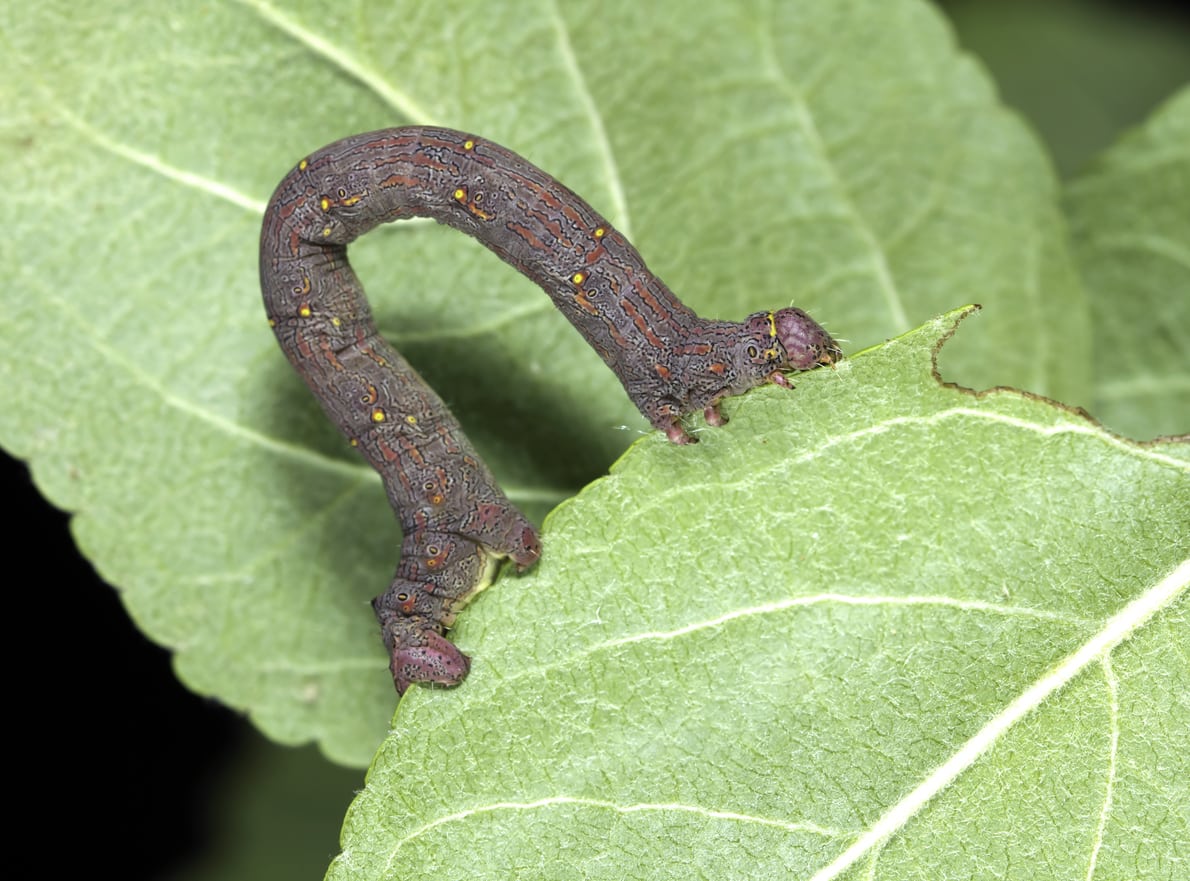Spanworm Control: Tips For Getting Rid Of Spanworms In Gardens


Perhaps you’ve noticed damage on coming blooms of your blueberry or cranberry bushes. Other young trees in the landscape have large, irregular rips and tears in the foliage. The snowbush shrub you’ve so lovingly tended shows symptoms, even after surviving the winter or vacationing outside in spring. No perpetrators are apparent, but something has caused the damage. As you search for the culprit, consider that you may be seeing spanworm damage. You shriek as you find the disfigured, vandalized leaves. “What are spanworms and how do I go about getting rid of spanworms before they strike again?” Read on to learn more about spanworms, their sneaky habits, and spanworm control.
About Spanworm Damage
While snowbush is among their favorite host plants, they will take up residence on others, such as cranberry bogs or blueberry bushes. Managing spanworms is possible when you know their forms and movement and how to scout for them. A member of the measuring worm or inchworm family, spanworms are related to the cutworm and, if not controlled, may cause similar damage to some plants and trees. Black-marked worms hatch from tiny eggs, which are difficult to spot. The actual worm is a yellowish-tan caterpillar that may not be visible at first glance. Most have slight green stripes, but stripes are sometimes black. Some types have white and black spots. There are numerous varieties, but all spanworms are masters of disguise and might not be visible without careful inspection. They easily resemble a twig or other part of the plant. Spanworms may curl underneath plant leaves and wait until almost dark to come out and wreak destruction. A specific means of identification is a single pair of red legs, about midway along the worm. This gives them a looping instead of slithering movement, your best indication that you’ve found a spanworm (inchworm family). This larval stage, as caterpillars, is when they create the most damage. A light infestation may weaken your plant, but heavy concentrations can kill the host. Florida, for example, has experienced problems with this pest for many years.
Getting Rid of Spanworms
Pick these off when you find them and toss into a container of soapy water. If you see numerous pests, beef up your beneficial insect populations by adding soldier bugs and ground beetles. Attract birds to your landscape for further help. Chemical treatments are not usually needed. If you believe your spanworm attack warrants chemical control, consult an Agricultural Chemicals Manual for the crop they are affecting or call your local county extension office. Chemicals will also eliminate pollinators and beneficial insects. The caterpillars turn into unusual, day-flying moths on some types, about an inch (2.5 cm.) long. With yellow and brown speckles, adults are usually spotted from May through July, depending on location. If not dealt with while young, they will only repeat the life cycle each season.
Gardening tips, videos, info and more delivered right to your inbox!
Sign up for the Gardening Know How newsletter today and receive a free copy of our e-book "How to Grow Delicious Tomatoes".

Becca Badgett was a regular contributor to Gardening Know How for ten years. Co-author of the book How to Grow an EMERGENCY Garden, Becca specializes in succulent and cactus gardening.
-
 Looking For Plants To Give You The Soft And Fuzzies? Try These 5 Fuzzy Leaf Plant Options
Looking For Plants To Give You The Soft And Fuzzies? Try These 5 Fuzzy Leaf Plant OptionsLovers of texture, drama, silver foliage and tactile plants will adore these special sensory garden additions. These fuzzy leaf plant options will leave you all aglow
By Susan Albert
-
 Get Ready For A Summer Of Hummers! Grow These Full Sun Hummingbird Plants and Flowers
Get Ready For A Summer Of Hummers! Grow These Full Sun Hummingbird Plants and FlowersIf you’re lucky enough to enjoy a sunny backyard, make sure you are maxing out on your pollinator opportunities and grow these full sun hummingbird plants and flowers
By Tonya Barnett